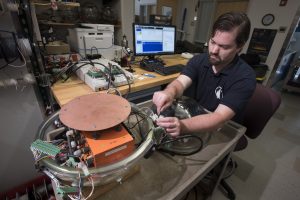Quality Assurance
The success of the WHOI OBS Lab is built on a philosophy of attention to detail, quality workmanship, and continuous technical advancement. Our staff is committed providing the the best possible products and services so that scientists can focus on their research.
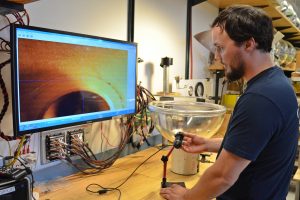 Procedures
Procedures
Engineering workflows in the WHOI OBS Lab follow clearly documented procedures that are
defined by check-sheets. The links below summarize the multiple check-sheets used to mobilize one WHOI BBOBS (S01) deployed and recovered on the Eastern North American Margin Community Seismic (ENAM) Experiment.
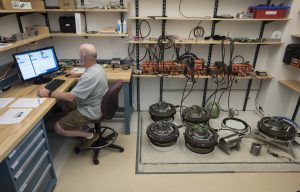 Sensor Testing & Calibration
Sensor Testing & Calibration
At the heart of our testing and calibration protocols is the Seismic Test Slab, a concrete pad isolated from building vibrations that is unique in the geophysical research community to the WHOI OBS Lab.
- Seismic Test Slab (pdf)
- Broadband OBS Testing (pdf)
- Differential Pressure Gauge (DPG) Tester (pdf)
- Geophone Testing (pdf)
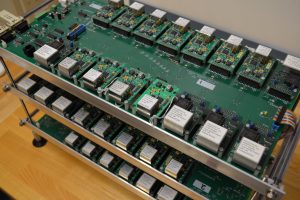 Clocks & Timing Verification
Clocks & Timing Verification
A seismographic dataset is only as good as the clocks in the instruments that record it. Underwater systems designed and maintained by the WHOI OBS Lab carry very low power clocks accurate to a few tens of milliseconds or better over the course of a year. We perform extensive testing on our clocks, and continue to monitor them right up until they are deployed to ensure that the data they collect is timed as accurately as possible throughout their mission. MORE (pdf)
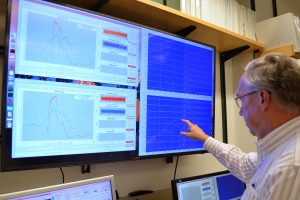 High-Level Output
High-Level Output
We take great pride in the quality of data from WHOI instruments. More than 3TB of data has been captured to date and is archived with IRIS Data Management Center. MORE
At-Sea Experience
WHOI OBS Lab personnel have extensive sea-going experience on a variety of UNOLS, USCG, contracted, and foreign-flagged vessels and are able to work safely and dependably in a variety of conditions to deploy and recover instruments or conduct acoustic surveys. The staff has called in domestic and international ports and is fully capable of interfacing with port agents, ship personnel, and scientists from around the world.
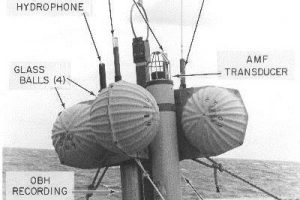 40+ Year History
40+ Year History
WHOI built its first Ocean Bottom Hydrophone in 1975 and, since then, has continued to improve on ocean-bottom instrumentation through careful technical evolution and pathbreaking advances to result in the community-leading instruments available to researchers today. MORE
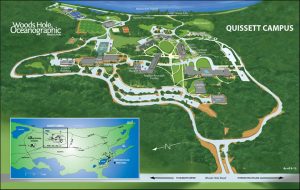 WHOI Campus
WHOI Campus
WHOI's 183-acre Quissett Campus and 36-acre Village Campus offer access to world-class laboratories, facilities, and equipment, including the Coastal Research Lab with a 10,000 gal. salt water test tank, Advanced Pressure Test Facility that will soon enable testing to full ocean depth, Dunkworks rapid prototyping facility, and R/V Tioga, WHOI's 60 ft. coastal research vessel to test equipment in local waters. Of course, OBS staff also has access to collaboration with other scientists and technical staff at WHOI and at the USGS Coastal and Marine Science Center located on the Quissett Campus.

